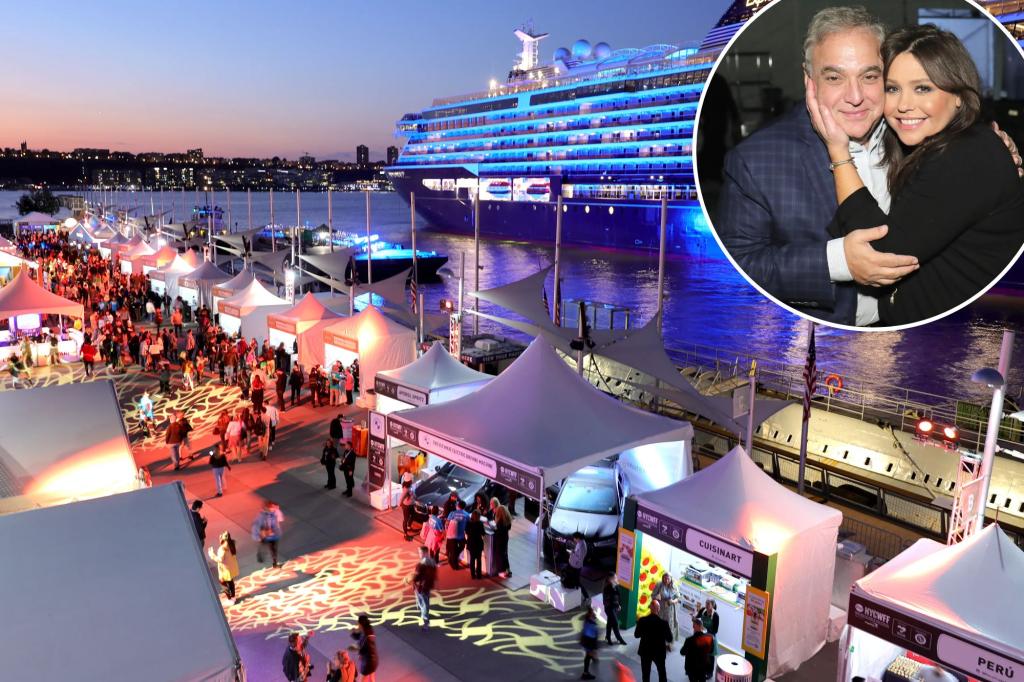Breaking News
How food festivals took a bite out of America

Food festivals have become a common occurrence in towns across America, from quirky events like the Gilroy Garlic Festival to larger ones like Taste of Chicago. These festivals not only celebrate food and wine but also bring communities together. One of the most famous food festivals, the Food Network New York City Wine & Food Festival, is making a historic move to Brooklyn this year. With over 100 restaurants participating, the festival is expected to draw a large crowd and have a positive impact on the local economy.
The trend of food festivals dates back to the Great Depression when communal food gatherings were a way for neighbors to stay fed. Today, there are over 1,600 food festivals in the US, with some featuring unique offerings like the Roadkill Cook-Off in West Virginia. The popularity of food festivals soared in 1984 when Tom Ryder created a wine-centric event in Aspen, which set the stage for similar festivals around the country.
Food festivals not only provide opportunities for dining and drinking but also drive tourism and media attention to the hosting destinations. They have become a significant source of economic impact for cities like Charleston, generating millions of dollars in revenue. With the rise of celebrity chefs and cooking shows, food festivals have become a staple of American pop culture, drawing both local and national visitors.
Carvell notes that high-profile festivals can be an efficient way of building a fanbase for a city and chef, especially with the rising cost of customer acquisition.
The wine and food festival scene expanded nationally when Lee Schrager, the chief commercial officer at Southern Glazers Wine & Spirits, launched the South Beach Wine & Food Festival in 2002 after attending the Aspen Classic 25 years ago. The event saw significant growth, attracting 65,000 attendees last year.
The success of the Miami festival led to the creation of the New York City Wine & Food Festival in 2005. Partnering with the Food Network and other entities, the event has continued to thrive, drawing 39,000 visitors last year.
Schrager focuses on promoting rising chefs through the festivals, providing them with a platform to showcase their talents. The festivals have been instrumental in launching the careers of chefs like Giada De Laurentiis and Alton Brown.
Chef Camille Becerra, a participant at the festival, emphasizes the evolving landscape of the food industry, driven by celebrity chefs and pop culture. Festivals like those in Aspen, New York City, Miami, and Chicago have set the stage for similar events to emerge.
While some foresee a potential decline in chef participation due to the demands of traveling for festivals, the current value and enjoyment offered by these events remain high. The move of the New York festival to Brooklyn signifies an experiment in expanding to new locations.
Please rewrite this sentence for me.
-

 Destination8 months ago
Destination8 months agoSingapore Airlines CEO set to join board of Air India, BA News, BA
-

 Breaking News10 months ago
Breaking News10 months agoCroatia to reintroduce compulsory military draft as regional tensions soar
-

 Gadgets3 months ago
Gadgets3 months agoSupernatural Season 16 Revival News, Cast, Plot and Release Date
-

 Tech News12 months ago
Tech News12 months agoBangladeshi police agents accused of selling citizens’ personal information on Telegram
-

 Productivity11 months ago
Productivity11 months agoHow Your Contact Center Can Become A Customer Engagement Center
-

 Gadgets3 weeks ago
Gadgets3 weeks agoFallout Season 2 Potential Release Date, Cast, Plot and News
-

 Breaking News10 months ago
Breaking News10 months agoBangladesh crisis: Refaat Ahmed sworn in as Bangladesh’s new chief justice
-

 Toys12 months ago
Toys12 months ago15 of the Best Trike & Tricycles Mums Recommend























